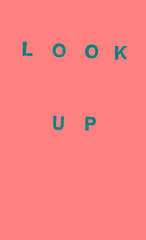Monthly Archives: January 2009
tom or row
Week 3: Haiku of Lost Time
 A few years ago I began the Proustku project, living in the blog Haiku of Lost Time. I have revisited it on occasion but really want to spend some more time on this and so I will be using my three creative hours some weeks to make some progress.
A few years ago I began the Proustku project, living in the blog Haiku of Lost Time. I have revisited it on occasion but really want to spend some more time on this and so I will be using my three creative hours some weeks to make some progress.
The foundations of the project are outlined in three posts (1, 2, 3) but here is the idea in summary.
I wanted a project to force an active reading of Proust, because it is too easy to just flow through. So in parallel with reading it (or just a little behind) I am writing something per page, to engage myself with the text more closely, to savor the words, the images, and to distill something of the essence, and to provide a counterpoint to the loquacity of the text.
The form I chose has the vague appearance of haiku, but is clearly nothing of the sort. Instead it is a hybrid of form and intent, of purpose and mode, forcing brevity to carry the weight of verbosity. It is a form with only one purpose–this project–and it is called the Proustku.
So for each page of the Enright revision of the Scott Moncrief and Kilmartin translation in the Modern Library Classics edition, I am writing a three-line piece, to capture something of the essence of each page. This will take years to complete, if I make it through, but why not start and see what happens? The benefit is in the doing, but I hope that there is something to get out of the reading. Going back to read over the 67 pieces I wrote in two batches three and then two years ago, I am surprised at how much of the novel these short pieces still evoke. If nothing else, this process is burning Proust in my brain!
I’ll probably write these pieces in batches but let them drip out over time, probably one per day. So visit Haiku of Lost Time to view a distilled Proust, reconstituted in a tisane made to soften a madeleine, and evoke a period of reading In Search of Lost Time.
look up
fez fedora
sigh click
Week 2: Beginning book binding
For the past few years I’ve been interested in printing of various kinds, including letterpress printing, with a view to using that technique among others for making artist books. I had been meaning to learn to bind books and had gone as far as reading a lot and acquiring various tools but had never taken the plunge of actually attempting to bind anything. Part of the three creative hours project is about taking that step and doing rather than just planning.
So I collected my bookbinding tools, grabbed a pile of paper and card, and decided to start some simple bindings. I am using Keith Smith’s Volume 1: Non-Adhesive Binding as a reference.
A simple pamphlet binding
To begin, I took half a dozen sheets of letter-sized bond paper and a letter-sized piece of thin card to serve as a cover. I folded the paper in half as a pile, and the cover separately, then marked the spines with a pencil in three locations for the sewing stations.
I then worked a bodkin through the paper and the cover separately. This was the trickiest part as it is tricky to get all the way through the paper without the pages slipping from each other and without tearing or creasing the paper. The bodkin itself is fairly lightweight so I was a little worried about it breaking as it seemed to bend a lot as I pushed hard enough to get through. However, the bodkin seems quite tough. When I had made the hole for one sewing station, I left the bodkin in place through the hole while I used a second bodkin to make another hole. This helped keep the pages together and aligned.
With the holes made, I prepped the sewing thread by running it over a block of binding wax to stiffen and protect the thread. It also makes it easy to thread through a needle and to actually sew. Following the order of holes in Smith’s book, I sewed the binding and tied it all together with a reef knot/square knot. The whole process was really simple although when I finished I found I had left a small loop of thread between the cover and the pages because I hadn’t pulled the thread through hard enough. Oh well, it was my first attempt and it was a lesson learned!
All in all, a very simple binding, and yet it looks quite decent. Just to add something extra, I used rubber stamps to add page numbers to the bottom outside corners of the pages so it looks like a notebook. With 24 pages, I decided to make it a mock notebook for chronicling one 24-hour period, the idea being to write/illustrate a page per hour. I’m not sure I’ll use it for that, but it’s prettier than a blank book for this first attempt.
A simple Japanese stab binding
Then on to a more complex binding, and the next step I wanted to try for the main task at hand. I decided to try out a Japanese stab binding on a small format book. I had plans to make something roughly 3″x5″ so decided to make a small book from index cards and bond paper. I cut a few sheets of bond paper into 3″x5″ pieces as the pages for the book and used index cards as the cover stock.
I marked another index card with the locations of the sewing stations and placed it on top of the complete pile of covers and pages. I punched the holes with the bodkins again and started sewing again as per instructions. This binding starts from the middle of the book block with a tail of thread hanging out to use for tying off later.
An obvious lesson but one I still managed to nearly mess up is cutting enough thread to ensure you can sew the whole book. There are ways to add thread if you are short but it is inelegant. I only just had enough thread to tie the knot but it was a close call. The estimate of using three times the height of the book block wasn’t quite enough to be comfortable for this binding.
The trickiest part of the process was finishing the sewing by extracting the thread at the midpoint of the book block. With the spine sewed tightly, it was hard to get the pages far enough apart to extract the needle through the middle without tearing pages but it worked out after a little persistence.
Tying a knot and then pushing it into the spine hides it reasonable but there is still a bulge in the spine at the location of the knot so it doesn’t seem ideal. There must be some better way to tie off the sewing with a less obvious result. The finishing doesn’t need to be perfect– part of the beauty of a handmade object is the appearance of it being handmade, and yet I still think there must be a better solution.
The binding itself seems to hold quite well and I’m surprisingly pleased with how it came out and how easy this has been.
Now on to the part of the project I was aiming for: making a miniature edition of an issue of my magazine, symmetry.
A miniature magazine edition
To make something a little more “real” than just binding blank pages but without committing to an elaborate printing project while learning to bind, I decided to make an edition of something that already existed. The real version of symmetry is 11″x7 3/8″ but a stab binding at that size would seem a little odd given the original is perfect bound. A smaller format would seem to work for this project, however.
I printed out the pages of symmetry from the PDF on 3″x5″ index cards, double-sided. It would have been best to print from the pages with printer’s markings so I could cut them to deal with the bleeds and alignment issues of printing on both sides of a card just from a color laser printer. However, this will do for now. I used a guillotine to cut down the cards to trim the unprintable white area from the top, bottom, and outsides of the pages, leaving the inside for the binding area. I then scored the left hand side of each page to make it easier for the pages to open once bound.
Making the holes was a little trickier in this case because there were 18 index cards to get through but by using bulldog clips to hold the pages together and working hard at it, it worked out. I made a template on another business card to punch through to ensure the holes were in the right places! The first two holes didn’t have clips in place so the second hole went through at a slight angle as the pages slipped but it wasn’t too bad.
With the holes made, it was time to sew and a few minutes later, I had a bound small edition of symmetry!





.jpg)
.jpg)
.jpg)
.jpg)
.jpg)
.jpg)
.jpg)
.jpg)


